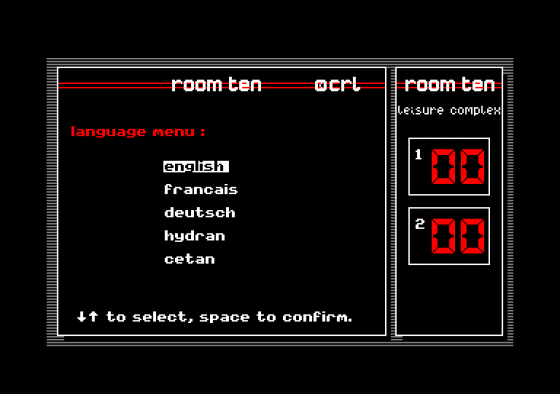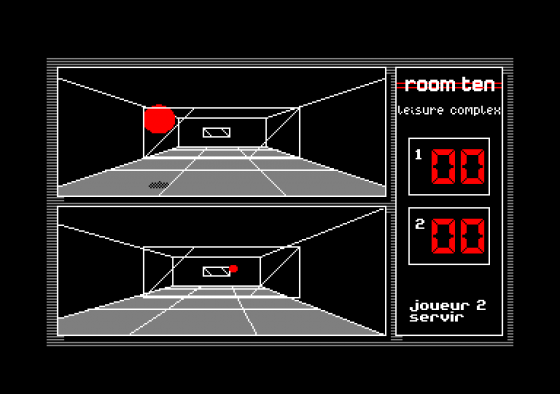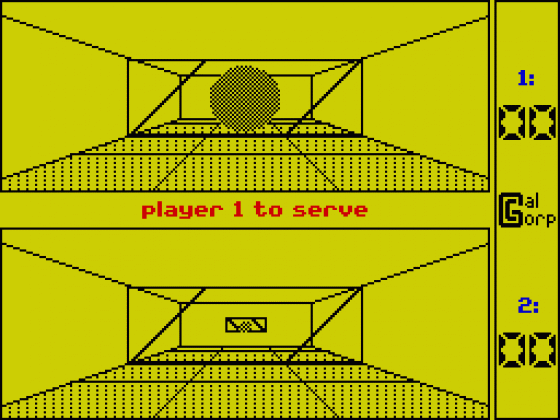
Computer Gamer
 1st August 1986
1st August 1986
Categories: Review: Software
Author: Mike Roberts
Publisher: CRL
Machine: Spectrum 48K
Published in Computer Gamer #17
Remember Tau-Ceti and the Galcorp - a pan-universal corporation that rules the cosmos. Galcorp also have a leisure services division. Mike Roberts took a step into the leisure centre and opened the door to Room Ten.
Room Ten
This is the latest offering from Pete Cooke, the prolific author of such games as Tau Ceti and Juggernaut, and follows on the theme from Tau Ceti and is set in the same time frame and in the same scenario as the earlier game. As a side note, it is worth mentioning that two more games are planned by CRL to be linked in with the same storyline - Academy, a training school for space pilots, and Attack On Centralis, the final battle against the robot revolution.
'Ere', my erstwhile editor yells at me (definition of erstwhile - 'adv, of old, formerly'), 'CRL 'ave got this 'ere new game. They reckon it's a mixture of Pong and Ballblazer - you do it', followed sharply by a 3 inch Amstrad disk narrowly missing my left ear. So off I toddle down to the computer room to fire it up and see if it is any good, and like most things that the old man comes out with, he was totally wrong. It's not a bit like Ballblazer - well, only a little bit. And it's not a bit like Pong - well, only a little bit. In fact, if you have played either of these games before, one game of Room 10 will leave you saying 'Hey, this is just like a mixture between Pong and Ballblazer'.
On entering Room 10 you are given an option between various languages - CRL obviously have an eye on foreign markets with French and German, though the inclusion of Cetan and Hydran perhaps indicate an experimental trans-galactic marketing deal. Possibly with Terran Gold, that well-known computer specialising in importing the best of the Earth's software to the rest of the universe.

After you have decided what nationality that you are, you head for the main menu. In this, you can get a run-down on 'Glyding', the sport that is played in Room 10, its history, development and how to play it. You can also get details on the history and function of GalCorp Leisure Services.
Other options involve the altering of the game controls and the game options themselves. These allow you to change the speed of the game (interestingly the speeds are measured in musical notation: presto, adagio, moderato, etc). You can also change the colour scheme (selected from a large selection of tasteful shades and combinations), the computer difficulty factor, and whether the computer is playing as player one, two, or both.
Then on to the game. The game screen is two windows, one on top of the other, with a status window on the right side of the screen. This window puts up your opponent's scores in a nice large 'LED' type format. This area also tells you which player is to serve next.

The screens themselves represent the two respective view down a 3D room with one player at each end. Each end of the room has a 'bat' on it that can move anywhere on that wall (this is where the similarity to Pong comes in), the floor of the room is marked out into a grid (hence the similarity to Ballblazer). The grid involves your sense of distance as the ball ricochets around the room.
By now you must have started to get the idea behind the game. Imagine Pong. A 2D surface with two sides enclosed. The other two sides are open with a moving paddle protecting them from the ball that is batted between the two paddles, which are controlled by the player. If a player misses the ball and it hits the open wall, then a point is scored against that person.
Imagine this game translated into three dimensions. You are looking across the playfield, i.e. from one bat to the other, and you are able to move left and right. But, in this game, there is also a height dimension so you can also move your bat up and down and the ball can bounce from floor to ceiling as well. The rest of the Pong rules still apply, let the ball go past you and you lose points. The scoring is five points for a score, and the first to 35 points wins.

For so simple an idea, the game is actually rather gripping and some of the play techniques can be very difficult to master.
How To Play The Game
The first thing to remember is that a bouncing ball is very difficult to hit as you don't exactly know where it is going to hit - do you move up to meet it, or do you stay where you are in the hope that the ball will come to meet you? Another thing to bear in mind is that a diagonally moving ball will spiral down the room and have the double problem of the ball moving sideways as well as up and down. This can put the ball spinning into one corner of the room whilst your opponent is still wondering where the hell it is going to end up.
Such is the nature of the game that you have to know roughly where the ball is going to end up and start moving there as soon as possible so you can see that it is important to con your opposing player into moving the wrong way. And a spiralling ball is one of the better put-offs.
The dimensions of the room (a function of the aspect ratio of the view screen I suspect) are such that the distance from roof to ceiling is about half that for the width between the two walls. This makes a ricocheting ball bounce at a much steeper angle when going up and down and makes it much more difficult for your opponent to work out exactly where the ball will go.
The method of getting these 'special' shots is to use the edge of your bat. If only half of the ball is hit with your bat then it will whizz off in that direction. The less of the ball you contact with, the steeper the angle the ball will vector off on. Directions can be compounded, so tapping the ball with a corner of your bat will zap it off in the classic spiral shot that can nasty drop the ball in a corner of the room whilst the computer or an opponent runs off in the opposite direction.
So that's the gist of Room 10, a very simple game with some very complicated gameplay. Easy to learn, yet takes a good few hours to get the hang of. This is the sort of game that you could load in at the end of every session when you just want a quickie. Yet another facet of the extremely talented Peter Cooke. Well done.
Room 10 is available on Amstrad cassette and costs £7.95.
Other Reviews Of Room Ten For The Spectrum 48K
Room 10 (CRL)
A review by (Crash)
Room Ten (CRL)
A review by Phil South (Your Sinclair)
Room Ten (CRL)
A review
Room Ten (CRL)
A review by Graham Taylor (Sinclair User)
Room Ten (CRL)
A review
Other Spectrum 48K Game Reviews By Mike Roberts
Scores
Spectrum 48K Version| Originality | 80% |
| Graphics | 100% |
| Use Of Machine | 80% |
| Value For Money | 80% |
| Overall | 85% |











